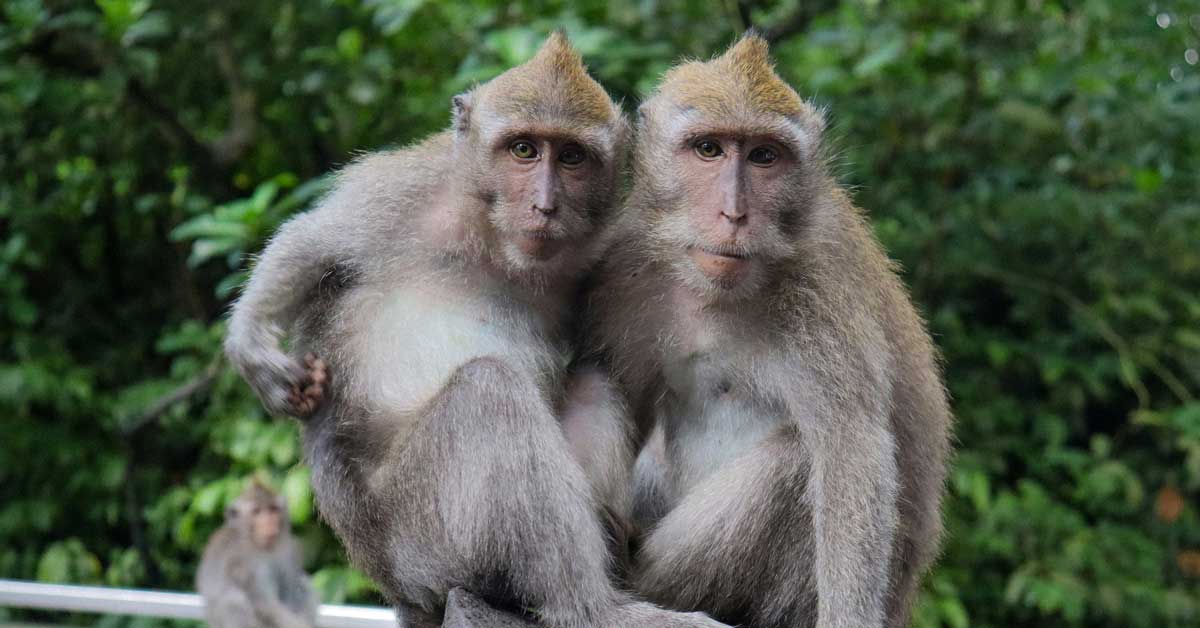This article, by Liz Kimbrough, was originally published by Mongabay.
— Camera traps in the Tayna Nature Reserve in the Democratic Republic of Congo have recorded two mother-infant pairs of eastern lowland gorillas, confirming the presence of healthy family groups in one of their last strongholds.
— This subspecies is critically endangered, with only 6,800 individuals left in the world, and is threatened by hunting, deforestation and mining activities
—Gorilla Rehabilitation and Conservation Education (GRACE) operates the world’s only sanctuary for rescued eastern lowland gorillas, and employs local communities in a key role in monitoring efforts in Tayna.
Newly captured images from camera traps in the Tayna Nature Reserve in the Democratic Republic of the Congo have recorded two mother-infant pairs of critically endangered eastern lowland gorillas. These images confirm the presence of healthy family groups of this great ape in Tayna, considered one of the gorillas’ last strongholds.
The eastern lowland gorilla, also known as Grauer’s gorilla (Gorilla beringei graueri), is one of the world’s most endangered primates, with no more than 6,800 individuals left in the world.
“For a critically endangered population where every individual counts, these mother-infant pairs provide hope for the future of gorillas in the eastern Democratic Republic of the Congo,” said Katie Fawcett, program director of Gorilla Rehabilitation and Conservation Education (GRACE). GRACE operates the world’s only sanctuary for rescued eastern lowland gorillas.
“We are continuously inspired by the commitment of GRACE in protecting the eastern lowland gorilla,” said Mary Brown, senior manager of conservation partnerships at the NGO Re:wild.
Tayna is a community-managed reserve, and the local community is an integral part of the monitoring effort there, according to Re:wild. All monitoring teams are hired and trained from local communities in partnership with the elected management authority, Réserve des Gorilles de Tayna (RGT).
To capture these images, and monitor the gorillas, two teams followed one day behind a single gorilla group, providing a continuous presence in an area of the reserve with a high density of gorillas. A third team places camera traps in the forest and systematically surveys the remainder of the reserve.
“[The images] also showcase the success of Tayna as a reserve created and managed by local communities,” Fawcett said. “Healthy gorilla populations survive here because of the commitment of Congolese communities and our efforts to co-create conservation solutions.”
“Gorillas are not easy to see in the wild, especially in the dense forests of Tayna,” said Jackson Kabuyaya Mbeke, the GRACE program director. “Seeing the gorillas from Tayna that we are working together to protect was a wonderful moment for everyone in the room.”
The eastern lowland gorilla is under threat from hunting, habitat loss due to deforestation, and the consequences of civil unrest that have led to illegal mining activities.
Before the civil war in the DRC in the mid-1990s, scientists believed there were close to 17,000 of these gorillas in the wild. However, the latest estimates indicate that only 6,800 individuals now remain in their natural habitat.
Hunting for bushmeat is the biggest threat to the gorillas, while mining is an increasing danger, according to Emma Stokes, Central Africa director for the Wildlife Conservation Society.
“The area is very rich in minerals and there has been a loss of habitat through mining and clearing of land. As demand for certain minerals rises, we expect to see an increase in mining,” Stokes told Mongabay.
The DRC is the primary source of more than 50% of the world’s coltan supply, which is used in various electronic devices and electric cars. Additionally, the DRC accounts for 80% of the global supply of cobalt, much of which is in the eastern lowland gorillas’ habitat.
“Despite the challenges they face in one of the most remote places in the world, GRACE is providing a lifeboat for this critically endangered primate and doing so hand in hand with local communities,” Brown said. “We would love to see their successful model replicated for other threatened species.”





